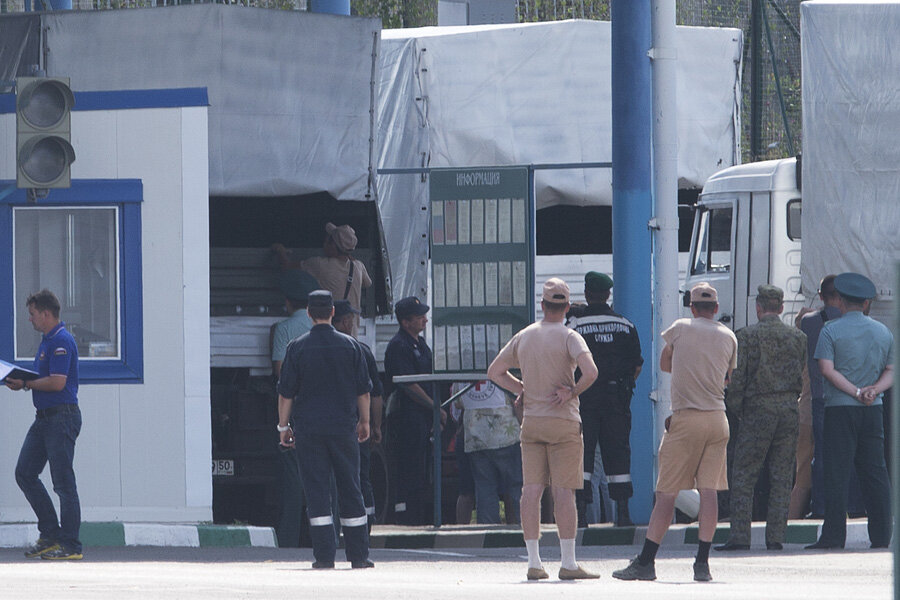Some Russian aid trucks in process to clear Ukrainian customs, officials say
Loading...
| Kiev, Ukraine
Some Russian trucks in a massive aid convoy began the process of clearing customs Thursday at a rebel-held border crossing in eastern Ukraine, the Ukrainian border guard service said.
Russia has been trying to send in over 200 trucks carrying what it says is humanitarian aid to help civilians in the hard-hit city of Luhansk, but Ukraine fears the move is a ploy to aid the pro-Russian separatists who have been fighting government troops. The convoy has been held up at the border for a week in a dispute over the conditions under which Ukraine will let in the Russian trucks.
Ukraine has accused Russia of arming and supporting the separatists since fighting began in mid-April, a charge Russia has denied.
News about the convoy comes as Ukrainian troops have made significant advances into rebel-held territory this week in a conflict that has already claimed more than 2,000 lives and forced over 340,000 people to flee their homes. Ukraine celebrates Independence Day on Sunday and reports are rife that the government is aiming to achieve a breakthrough by that date.
Fierce fighting was still reported Thursday in Luhansk, a day after the government said it had captured much of the rebel stronghold 20 kilometers (12 miles) from the Russian border, Andriy Lysenko, spokesman for the Ukrainian National Security Council, told reporters in Kiev.
The city has been under siege for 19 days, lacking basic amenities like running water or electricity. Residents there are struggling to survive, the International Committee of the Red Cross said Thursday following a visit to Luhansk a day earlier.
"People hardly leave their homes for fear of being caught in the middle of ongoing fighting, with intermittent shelling into residential areas placing civilians at risk," the ICRC said in a statement.
The agency said it has taken all necessary preparatory steps for the passage of the Russian convoy, which remains at the border. It said it was ready to deliver the aid to Luhansk if both Russia and Ukraine agreed on the strictly humanitarian nature of the convoy and all parties in the fighting gave the Red Cross assurances of safe passage.
An Associated Press journalist saw two Red Cross jeeps heading to an unknown destination Thursday in Ukraine after passing through the rebel-held Izvaryne border post. The Ukraine border statement referred to the Russian crossing on the other side of that post.
Rayan Farukshin, spokesman for Southern Customs district of Russia, said Thursday that 16 aid trucks had entered the Russian customs zone on Wednesday that links up with Izvaryne in Ukraine. He said four of the trucks have been successfully checked by the Russian side, while another four were in the process of being checked. After that, the trucks need to get Ukrainian approval.
Meanwhile, five troops were killed and two civilians died in the past 24 hours in rebel-held areas, authorities said. That followed over 50 deaths in the region Wednesday.
Troops were fighting separatists in and around Ilovaysk near the rebel-held city of Donetsk, even though the town is under government control, Lysenko said.
At least two people were killed and an unspecified number wounded Thursday in an artillery strike on a Donetsk suburb, the mayor's office said. Once home to 1 million, the largest city still held by the rebels has seen one-third of its population flee.
Ukrainian troops claimed Thursday to have seized two Russian armored vehicles outside of Luhansk. Photos provided by the defense ministry showed one vehicle and an array of Russian civilian and army IDs.
Moscow denied the reports. A spokesman for Russia's defense ministry told Russian news agencies that the armored vehicle in the photos did not belong to Russia and the documents found in the vehicle had not been used for five years.







